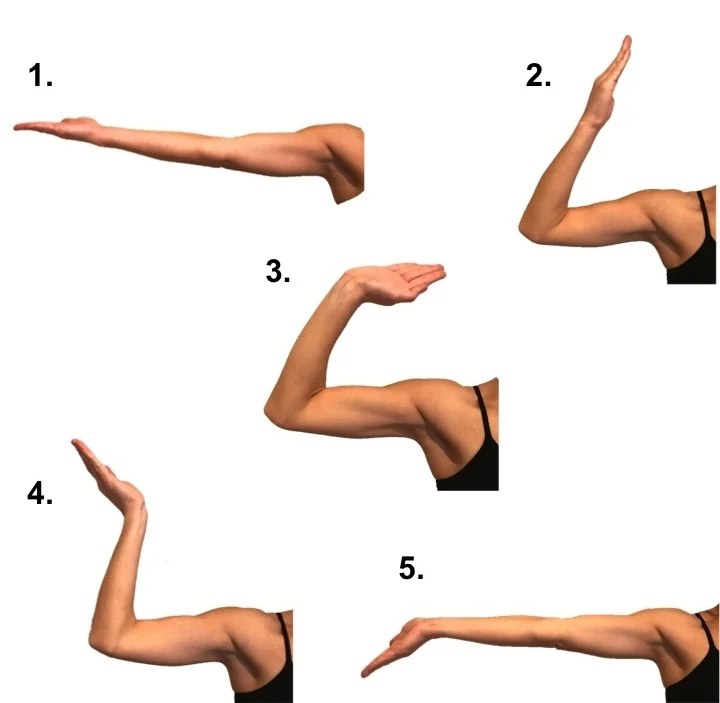
Do You Wake Up With Numb or Tingling Hands? Here's What Your Body Is Trying to Tell You
🧠 What It Means When You Wake Up With Numb or Tingling Hands
When your hands feel numb, tingly, or like they’re “asleep” upon waking, it usually means that the
nerves or blood flow to your hands were temporarily restricted during sleep.But if it happens often, it may also point to underlying health issues.

Common Causes and What Your Body Is Telling You
-
Poor Sleeping Position
-
If you sleep with your hands under your pillow or your arms bent, it can compress the nerves or limit blood circulation.
-
🩸 What your body is saying:
“Your circulation is blocked — change your posture.”
-
-
Carpal Tunnel Syndrome
-
This occurs when the median nerve (running from your forearm into your hand) is compressed in your wrist.
-
⚠️
Symptoms: Tingling, numbness, or burning pain in the thumb, index, and middle fingers. -
🧠 What your body is saying: “Your wrist nerve is under pressure — I need rest, stretching, or ergonomic adjustment.”
-
-
Nerve Compression in the Neck or Shoulder
-
If nerves in the neck (cervical spine) are pinched, it can cause tingling down to your hands.
-
💪 What your body is saying:
“Your posture or spine alignment needs attention.”
-
-
Vitamin Deficiencies
-
Lack of vitamin B12, B6, or B1 affects nerve health.
-
🥦 What your body is saying: “I’m not getting enough nutrients to keep your nerves healthy.”
-
-
Diabetes or Prediabetes
-
High blood sugar can damage nerves (a condition called diabetic neuropathy).
-
🍬 What your body is saying: “Your blood sugar might be too high — check your glucose levels.”
-
🩺 What You Should Do
✅ 1. Adjust your sleeping posture:
-
Avoid sleeping with your hands under your head or bent for long periods.
✅ 2. Stretch and move regularly:
-
Gentle wrist and hand stretches before bed can improve circulation.
✅ 3. Check your ergonomics:
-
If you use a computer, keep your wrists straight and take breaks.

✅ 4. Eat foods rich in nerve-supporting nutrients:
-
Vitamin B12: Eggs, fish, meat, and fortified cereals
-
Vitamin B6: Bananas, potatoes, chickpeas
-
Vitamin E: Almonds, sunflower seeds, spinach
-
Magnesium: Avocado, dark chocolate, nuts
✅ 5. See a doctor if it’s frequent:
-
If numbness happens every morning or lasts for several hours, it’s time for a neurological or diabetes check-up.
There are several simple exercises you can do to improve circulation, reduce numbness, and strengthen your wrist and hand nerves — especially if you often wake up with tingling hands.

🖐️ 1. Wrist Rotations
How to do it:
-
Stretch your arms forward.
-
Make gentle circles with your wrists — 10 times clockwise, then 10 times counterclockwise.
Why it helps:
It improves blood flow to your hands and prevents stiffness in the wrist joints.
✊ 2. Hand Opening and Closing Exercise
How to do it:
-
Stretch your fingers wide open, hold for 3 seconds.
-
Then slowly make a fist and squeeze gently.
-
Repeat 10–15 times.
Why it helps:
It enhances nerve flexibility and strengthens the small muscles in your hands.
🤲 3. Nerve Glide Exercise (Median Nerve Stretch)
How to do it:
-
Start with your arm at your side, elbow bent, palm facing up.
-
Slowly extend your arm out and straighten your wrist so your palm faces the ceiling.
-
Hold for 5–10 seconds, then relax.
-
Repeat 5 times per arm.
median nerve (the one affected in carpal tunnel syndrome).
Why it helps:
It releases tension on the
💪 4. Neck and Shoulder Stretch
How to do it:
-
Sit or stand tall.
-
Tilt your head to one side (ear toward shoulder) and hold for 10–15 seconds.
-
Repeat on the other side.
-
Roll your shoulders backward and forward 10 times.
Why it helps:
It eases pressure on the nerves in your neck that connect to your hands.
✋ 5. Wrist Flexor Stretch
How to do it:
-
Extend one arm in front of you, palm facing up.
-
With your other hand, gently pull the fingers of the extended hand downward until you feel a stretch in your forearm.
-
Hold for 10–15 seconds, then switch sides.
Why it helps:
It relieves tightness in the muscles that can compress hand nerves.
🧘♀️ 6. Finger Tapping Exercise
How to do it:
-
Place your hand flat on a table.
-
Tap your thumb to each fingertip one by one, then reverse the order.
-
Repeat 10 times for each hand.
Why it helps:
It improves coordination and nerve signaling between your hand and brain.
7. Hand Shake
How to do it:
-
Simply shake your hands gently as if air-drying them after washing.
-
Do this for 20–30 seconds.
Why it helps:
It quickly boosts blood flow and releases pressure from compressed nerves.
💡 Tips for Better Results
-
Do these exercises daily, especially before bed or after waking up.
-
Keep your hands warm — cold temperatures reduce circulation.
-
Avoid sleeping on your hands or arms for long periods.
News in the same category


Bed Bugs Hate This! How Diatomaceous Earth and Cloves Can Wipe Them Out

These are the consequences of sleeping with the…

5 Common Foods That Often Contain Parasites — Many People Eat Them Daily

1 Vitamin Stops Calcium Buildup in Arteries and Heart

Why this doctor refuses to prescribe statins for high cholesterol

Vegetables for people with diabetes need to know

The #1 food for toxic kidneys

Top 3 Vitamins for Hip Arthritis – Say Goodbye to Hip Pain

Garlic & Cloves: The Natural Remedy for Varicose Veins and Circulation

5 foods that heal your body and STARVE cancer—eat these now!

Diagnosed With Terminal Cancer That Spread to Her Brain, the Woman Broke Down in Tears After Learning the “Culprit” Came From Her Own Family

The Impressive Health Benefits of Guava Fruit and Leaves & How to Eat Guava (Evidence Based)

How to Control Blood Sugar Levels with a Boiled Egg

I started adding chia seeds to my breakfast every day — and within a week, I noticed some surprising changes

4 powerful vitamins that help protect you from cancer—start today!

What Happens When You Take 1 TBSP of Apple Cider Vinegar For 60 Days

The #1 Food to Unclog Your Arteries Naturally

What Your Feet Can Reveal About Your Blood Pressure, Thyroid, and Arthritis Risk
News Post

Can Onion Juice Gently Support Eye Health? A Natural Tip to Try

Bed Bugs Hate This! How Diatomaceous Earth and Cloves Can Wipe Them Out

These are the consequences of sleeping with the…

5 Common Foods That Often Contain Parasites — Many People Eat Them Daily

1 Vitamin Stops Calcium Buildup in Arteries and Heart

S:ida Acuta: Exploring the Healing Properties of this Herbal Remedy

DIY Flaxseed Collagen Night Gel for Hydration and Rejuvenation

10-Day Licorice Treatment for Dark Spots: Fade Pigmentation and Achieve Glowing Skin Naturally

Easy Recipe to Make ABC Collagen Ice Cubes at Home: The Secret to Glowing, Firm Skin

2 Mins Black Shampoo For Grey Hair

Why this doctor refuses to prescribe statins for high cholesterol

The 'divine' secret to frying

Why do we have to leave our phone face down on the table when we are not using it?

Hanging a towel on the door handle before bed: Unexpected benefits but few people know

Tips for conditioning your hair with over-cooked bamboo shoots

Treat premature gray hair thanks to the black dye formula

What Are These Strange Black Dots In Your Kitchen

Magic Eraser can be used for almost anything, but here's what you didn't know

Wrong understanding turns water purifiers into diseases, remove them immediately to avoid harming the whole family

